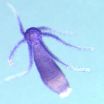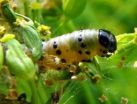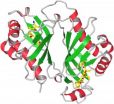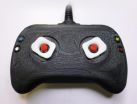Boosting cell production could help treat liver disease
Scientists have shed light on how the liver repairs itself with research that could help develop drugs to treat liver disease
2012-03-05
(Press-News.org) Scientists have shed light on how the liver repairs itself with research that could help develop drugs to treat liver disease.
Researchers at the Medical Research Council (MRC) Centre for Regenerative Medicine at the University of Edinburgh have discovered how to enhance the production of key cells needed to repair damaged liver tissue.
The study, published in the journal Nature Medicine, could help heal livers affected by diseases such as cirrhosis or chronic hepatitis.
Scientists were able to unpick the process of how different cells in the liver are formed.
When the liver is damaged it produces too many bile duct cells and not enough cells called hepatocytes, which the liver needs to repair damaged tissue.
They found they could increase the number of hepatocyte cells – which detoxify the liver – by encouraging these cells to be produced instead of bile duct cells.
Understanding how liver cells are formed could help to develop drugs to encourage the production of hepatocytes to repair liver tissue. This could eventually ease the pressure on waiting lists for liver transplants.
Professor Stuart Forbes, Associate Director at the MRC Centre for Regenerative Medicine at the University of Edinburgh, who is a consultant hepatologist and was the academic leader of the study, said: "Liver disease is on the increase in the UK and is one of the top five killers. Increasing numbers of patients are in need of liver transplants, but the supply of donated organs is not keeping pace with the demand. If we can find ways to encourage the liver to heal itself then we could ease the pressure on waiting lists for liver transplants."
Liver disease is the fifth biggest killer in the UK. There are almost 500 people waiting for a liver transplant, compared to just over 300 five years ago.
The production of hepatocyte cells was increased by altering the expression of certain genes in early stage liver cells.
Dr Luke Boulter, of the University of Edinburgh's MRC Centre for Regenerative Medicine and first author on the paper, said: "This research helps us know how to increase numbers of cells that are needed for healthy liver function and could pave the way for finding drugs that help liver repair. Understanding the process in which cells in the liver are formed is key in looking at ways to repair damaged liver tissue."
Dr Rob Buckle, Head of Regenerative Medicine at the MRC, said: "Liver transplants have saved countless lives over the years, but demand will inevitably outstrip supply and in the long term we need to look beyond replacing damaged tissues to exploiting the regenerative potential of the human body. The MRC continues to invest heavily across the breadth of approaches that might deliver the promise of regenerative medicine, and this study opens up the possibility of applying our increasing knowledge of stem cell biology to stimulate the body's own dormant repair processes as a basis for future therapy."
INFORMATION:
The study was carried out in collaboration with the University's MRC Centre for Inflammation Research, the Beatson Institute for Cancer Research in Glasgow and the K.U. Leuven in Belgium.
END
ELSE PRESS RELEASES FROM THIS DATE:
2012-03-05
Receding gums often result in tooth sensitivity and can lead to decay of the root and persistent inflammation of the gum. New research published in BioMed Central's open access journal Head & Face Medicine demonstrates that a novel method using bovine collagen is able to enhance gum healing. This resulted in thicker margins around the tooth and, in over half the cases, complete coverage of exposed roots.
Researchers across Germany and Switzerland led by Dr Shahram Ghanaati and the dentist Dr Markus Schlee investigated the possibility of using collagen, extracted from ...
2012-03-05
In the absence of eyes, the fresh water polyp, Hydra magnipapillata, nevertheless reacts to light. They are diurnal, hunting during the day, and are known to move, looping end over end, or contract, in response to light. New research published in BioMed Central's open access journal BMC Biology shows that stinging cells (cnidocytes) in hydra tentacles, which the animals use for self protection and to catch prey, are linked via a simple nervous system to primitive light responsive cells that co-ordinate the animals' feeding behavior.
Hydra are members of a family of radially ...
2012-03-05
Do your parents know where you are at night? According to 36 per cent of 15 year old boys and nearly a quarter of 15 year old girls the answer to that question, at least once a month, is no.
This is the finding from Understanding Society, a long term study of 40,000 UK households, which asked more than 2,000 10-15 year olds how frequently they stayed out past 9.00pm without their parents knowing where they were. The study, which is funded by the Economic and Social Research Council (ESRC), also found that staying out late without telling your parents is unrelated to ...
2012-03-05
In nature, how do host species survive parasite attacks? This has not been well understood, until now. A new mathematical model shows that when a host and its parasite each have multiple traits governing their interaction, the host has a unique evolutionary advantage that helps it survive.
The results are important because they might help explain how humans as well as plants and animals evolve to withstand parasite onslaught.
The research, reported in the March 4 online edition of Nature, was supported by the National Institute for Mathematical and Biological Synthesis ...
2012-03-05
Researchers working at the U.S. Department of Energy's (DOE) SLAC National Accelerator Laboratory have used powerful X-rays to help decipher how certain natural antibiotics defy a longstanding set of chemical rules – a mechanism that has baffled organic chemists for decades.
Their result, reported today in Nature, details how five carbon atoms and one oxygen atom in the structure of lasalocid, a natural antibiotic produced by bacteria in soil, can link into a six-membered ring through an energetically unfavorable chemical reaction. Unlocking this chemical pathway could ...
2012-03-05
SALT LAKE CITY – University of Utah engineers designed a new kind of video game controller that not only vibrates like existing devices, but pulls and stretches the thumb tips in different directions to simulate the tug of a fishing line, the recoil of a gun or the feeling of ocean waves.
"I'm hoping we can get this into production when the next game consoles come out in a couple of years," says William Provancher, an associate professor of mechanical engineering who is in Vancouver, British Columbia, demonstrating the new game controller with his students March 5-7.
They ...
2012-03-05
Details about Michigan "Cash for Clunkers" payout program have been announced. Under the NEW "Cash for Clunkers Michigan" or "Michigan Clunkers" program, consumers will be guaranteed a minimum of $2,500 trade-in towards any nicer, newer vehicle from a participating new car dealer when they trade in their old vehicle and purchase a qualifying vehicle.
In order to be eligible for the program, the trade-in passenger vehicle must be in drivable condition and be continuously insured and registered to the same owner for the full year before the ...
2012-03-05
VIDEO:
Karen Bonuck, Ph.D., discusses her new research showing that young children with sleep-disordered breathing are prone to developing behavioral difficulties such as hyperactivity and aggressiveness, as well as emotional symptoms...
Click here for more information.
March 5, 2012 — (BRONX, NY) — A study of more than 11,000 children followed for over six years has found that young children with sleep-disordered breathing are prone to developing behavioral difficulties such ...
2012-03-05
Due to the ongoing coverage of celebrity deaths that involve drug or alcohol abuse, many of those that are struggling with their own addictions have begun exploring what options may be available to them. This first step is always daunting though, and many individuals may be uncomfortable joining a cookie-cutter program that may not exactly fit their own needs and concerns. This is why Non 12 step rehab center, Prominence Treatment Center, is now offering its services to anyone that would like a unique and personalized strategy to beat their own addiction.
Addiction can ...
2012-03-05
The origin of dolomite has been hotly debated. There is still a lack of petrological evidence and theoretical support for the formation of primary dolomite in geological history because dolomite cannot be synthesized under normal laboratory conditions. Wright (2004) experimented with Kulong lake water under normal surface temperature and pressure conditions to precipitate dolomites. His study offered experimental petrological evidence for primary dolomite formation. However, examples of ancient primary dolomites are rare. A research group lead by Professor Liu at Northwestern ...
LAST 30 PRESS RELEASES:
[Press-News.org] Boosting cell production could help treat liver disease
Scientists have shed light on how the liver repairs itself with research that could help develop drugs to treat liver disease





